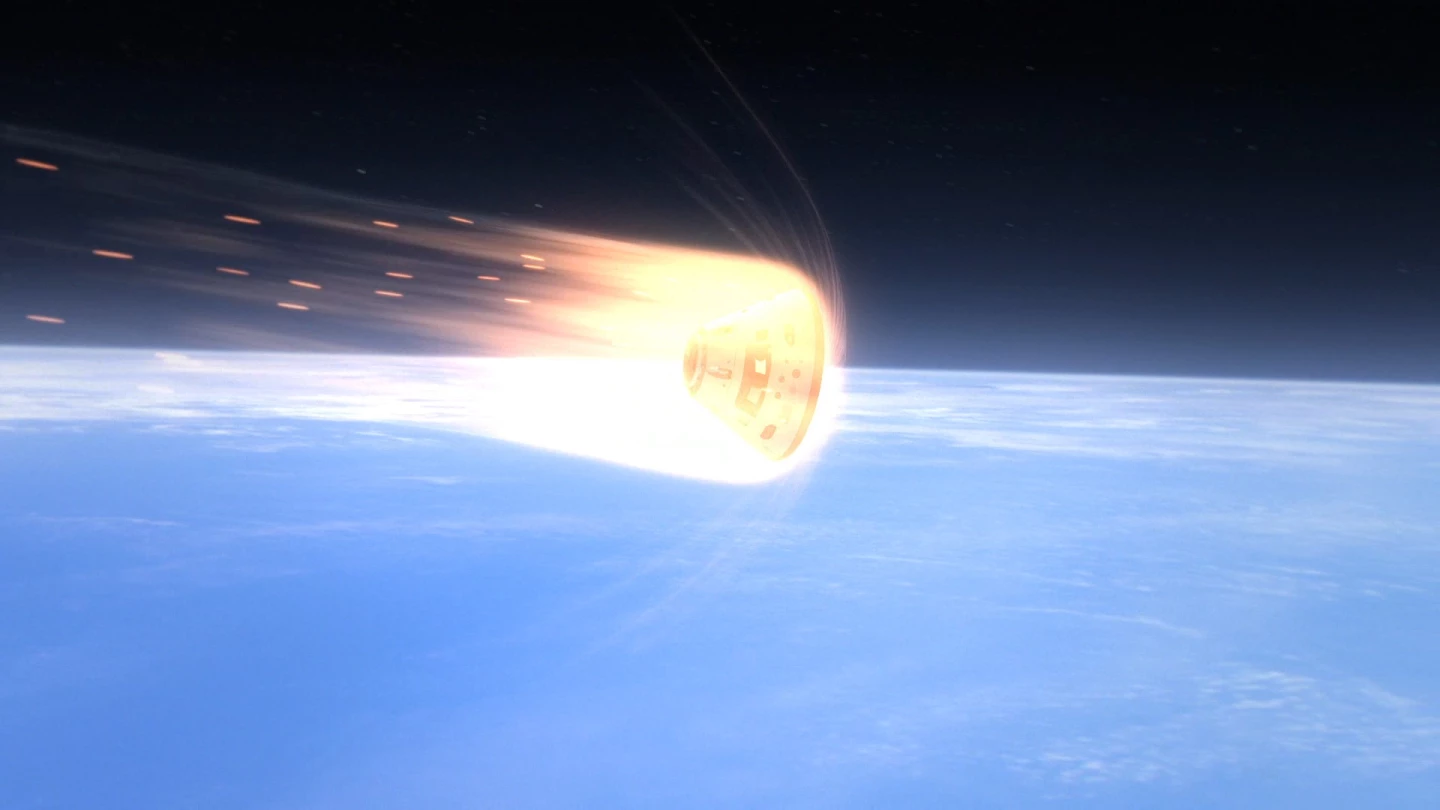With the launch date of the Orion next-generation spacecraft approaching fast, NASA scientists have set out what they hope to learn from its maiden launch. The test flight, dubbed EFT-1 is the first of three proving missions set to trial many of the in-flight systems essential to the success of any manned mission to Mars, or beyond.
EFT-1 will take the form of an unmanned test flight, with the Orion spacecraft being controlled entirely by a flight control team based in NASA's Kennedy Space Center. The launch promises to be a historic occasion, representing a significant milestone on mankind’s journey to Mars. Orion, the product of more than 50 years of experience, will be the first human-rated spacecraft to be constructed in over 30 years.
Weather permitting, Orion is slated to be launched into space atop a Delta-2 Heavy rocket on December 4th of this year. The flight is expected to last four hours and 25 minutes, during which time the spacecraft will see itself launched 3,600 miles (5,794 km) above Earth, with the objective of creating the same kind of intense re-entry pressures that would be experienced by the capsule upon return from a deep space mission.
NASA staff on the ground will be nervously monitoring several key aspects of the proving mission, with the help of 1,200 additional sensors geared towards detecting vibration and temperature stress, while taking detailed measurements of event timing. Furthermore, cameras are set to be mounted aboard Orion to capture the action at key separation points, as well as views out of the windows of the capsule, and a live shot of the parachutes as they deploy (hopefully).

One vital component to be tested is the Launch Abort System (LAS). This mechanism is in essence a fail-safe required to protect astronauts should anything go wrong during the initial launch phase. Designed to encapsulate the crew module in the event of a failure on the launch pad, the LAS thrusters will fire, carrying the Orion away from danger in a matter of milliseconds. However, even if there is no danger on the launch pad, the LAS must still perform perfectly, as any failure in the system could block parachute deployment upon re-entry, leaving Orion hurtling towards Earth at a fatal velocity.
Orion's computer systems will also be the subject of keen observation throughout the test flight. The computers installed on the spacecraft are 400 times faster than those used aboard the space shuttle, with the ability to process 480 million instructions per second. However, they must survive the radiation and extreme cold of deep space followed by the fiery conditions of re-entry. Whilst being mindful of the potential damage inflicted on computer systems by the radiation, NASA scientists will also be anxiously monitoring the levels in the context of prolonged human exposure to this dangerous form of energy.
Whilst all systems aboard Orion will be put through extreme conditions during EFT-1, none are tested as stringently as those required for re-entry. The entire proving mission is designed around duplicating the kind of pressures that a potential manned mission to Mars will have to endure on its return to Earth, and so naturally the results of the performance of these systems will be the most eagerly anticipated by NASA scientists waiting impatiently in the Kennedy Space Center.

The heat shield, comprised of a 1.6-inch (41-mm) thick slab of Avcoat ablator, the same material that protected the crew of Apollo-era missions, will be expected to protect the Orion crew module from the perils of a re-entry at speeds exceeding 20,000 mph (32,187 km/h). This speed will create temperatures of around 4,000 ºF (2,204 ºC), the same as the melting temperature of a nuclear reactor, as Orion plunges towards Earth. Upon contact with the atmosphere, the heat shield is designed to slowly degrade, drawing the intense heat of re-entry away from the crew module in the process.
The final aspect of EFT-1 will be the observation of the parachute deployment system. Assuming the LAS has successfully jettisoned from the crew module following launch, the majority of Orion's stopping power will be provided by the deploying of two drogue parachutes, followed shortly after by three enormous primary parachutes, with the combined effect of slowing the spacecraft to 1/1000th of its initial re-entry speed. Previous testing of the parachute deployment system has proven that the Orion spacecraft could safely land under only one parachute, however these tests could not simulate the extremes that the system will have to endure during EFT-1 prior to deployment.
The Orion spacecraft, once recovered from the Pacific Ocean, is set to be used for further testing of the ascent abort system in 2018. Data collected from EFT-1 will be invaluable in informing future testing, moving towards a crewed Orion mission some time in 2021.
The video below displays a computer simulation of the maiden test flight.
Source: NASA







